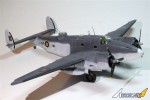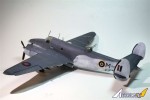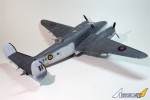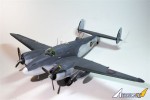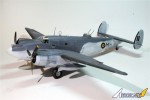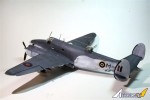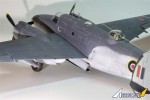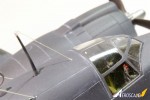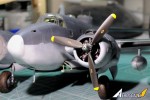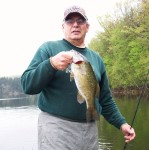1⁄48Lockheed Ventura
11
Comments
History
The Lockheed PV-1 Ventura was originally conceived as a bomber, then converted to a patrol aircraft, that was primarily used by United States and British Commonwealth during WWII.The Ventura was developed from the Lockheed Model 18 Lodestar transport as a replacement for the Lockheed Hudson, which was also used as a bomber with the Royal Air Force. Originally used as a daylight bomber in Europe, they proved to be less then effective in that role, and were then transferred to both countries' Coastal Commands for use as maritime patrol aircraft .
The Ventura was very similar to the Lockheed Hudson. The primary difference was that the Ventura was larger and heavier, with upgraded engines. The RAF ordered 188 Venturas in February 1940 which were delivered from 1942 onwards.
As the Venturas were gradually transferred to patrol duties with Coastal Command, 30 aircraft were sent to the RCAF.
The PV-1 Ventura was primarily built by the Vega Aircraft Company division of Lockheed for the U.S. Navy. The main differences between the PV-1 and earlier models were the inclusion of special equipment in the PV-1, better adapting it to its patrol/bombing role. The maximum fuel capacity of the PV-1 was also increased to extend its range. The forward defensive armament was reduced for this reason as well. The most important addition was of an ASD-1 search radar.
Early production PV-1s still carried a bombardier's station behind the nose radome, with four side windows and a flat bomb-aiming clear panel on the bottom side of the nose. Late production PV-1s dispensed with this bombardier position but retained the the flat bottom aiming panel, then that was replaced with a pack of three 0.50 cal MGs. These aircraft could also carry eight 5 in (127 mm) HVAR rockets on launchers underneath the wings.
A total of 157 Ventura G.R. Mk. Vs were used operationally by the RCAF from June 1942 to April 1947 in the home defence coastal patrol role in both Eastern and Western Air Command. They were flown by 8, 113, 115, 145, and 149 Squadrons.
The Kit
Revell has issued a 1/48 scale kit of the Lockheed PV-1 with options for both the look down bomb panel as well as the 3 pack of .50 cal MGs. along with the newer nose clip. They also issued the British Mk11a version with the full bombardier station in the nose including the 4 side windows. When our own Jessica Cooper did a series of reviews of Aviaeology's Venturas in Canada, I posted that I really wanted to use them for my build rather than the kit decals which also contained Canadian markings. Jessica offered me a set of decals, and let me pick which ones I wanted. Now that's Aeroscale family for sure. (Joel chose "Venturas in Canada 3" - Ed.)The overall moulding of the kit is well detailed including a nicely done cockpit and gun turret. Unfortunately, there are issues that needed to be addressed.
Revell used the wrong props as the cord is too narrow, replicating the props from the Model 18 Lodestar which had a less powerful set of engines. So a new set of props came from Quickboost.
The engine cowlings are too short, so I also used Quickboost cowlings. While I was at it, I decided to go the full route and went with the Quickboost engines as the kit engine's crankcases were to small. What a huge difference in detail.
D Molds makes a corrected shape nose that has more of flat profile on the bottom. So I also went for one. It may just be my eyes, but I really can't see enough of a difference to warrant both the expenditure and the time needed to add it to each fuselage half unless you're looking at the model from a upward orientation, which is basically impossible once displayed on a shelf. Other AM additions were :
- Eduard Basic Interior set with IP
- Eduard Masks for all the glass
- Ultracast:Diamond tread wheels and tires
- And of course the Aviaeology decals which comes with an astonishing amount of detail photos.
The Build
The overall build was started in August 2015, and was wrapped up at the beginning of Dec. This was my longest build to date. The kit even with all the AM parts had no major fit issues, but a fair amount of Bondo was needed especially around the engine nacelles.I did detail the Navigator/Radio compartment right behind the cockpit, but once the fuselage was closed up, really can't be seen. If I were to build another PV-1 I certainly wouldn't put much effort into that compartment.
For those interested, my build log may be found here.
The only issue was building and attaching the 4 part bomb bay doors. Just take your time working out how best to go about it, as the instructions really aren't much a help. Done right they do look rather good, but are really flimsy to the touch.
Painting & Decalling
This was the 1st full build that I used my modified Black Basing technique. Black Basing is merely the use of a blotchy coat of flat black or a dark colour primer, followed by light coats of top color that takes the place of pre-shading. The effect just looks more realistic to me. My modified method is still to prime with either Mig grey primer, or Tamiya Grey primer, then a very blotchy coat of flat black. Other colors can be used for various effects including complete panels, etc. The key is applying light colour coats so that you don't hide the effects of the black basing.As I said before, the decals were by Aviaeology, which were in perfect register and dead on with the colors as far as I can tell. Not to thick nor to thin, they reacted extremely well to my 3 part decalling procedure:
- Micro Set (Red)
- Micro Sol (Blue)
- Solvaset
Conclusion
All told Revell has given us a unique aircraft that previously has only been available as a vac kit. This was truly a most enjoyable build that I highly recommend.Comments
Hi Joel,
You have done a SUPERB job with this aircraft.
Really like the paint job and markings.
The jig holding the aircraft is made by whom, if i may ask.
Cheers,
Joe
DEC 18, 2015 - 03:04 PM
Joel, I will reiterate what I said in your build blog; great work indeed. Looks ready to ply some steel grey open ocean.
Best wishes,
Ian
DEC 18, 2015 - 09:58 PM
Hi Joel
Nice one! It's great to see your Ventura on the Front-Page.
All the best
Rowan
DEC 19, 2015 - 02:15 AM
Gary,
Thanks so much for those more then kind words about both the feature article and the build itself.
You've been along for the ride since day 1,and it's been much appreciated. I've just started the Academy B-25B,so there isn't enough done for even a modest update.
My computer died this morning, so I'm struggling with my cell phone to try and stay in touch for now.
Joel
DEC 20, 2015 - 03:00 AM
Rowan,
Thank you my friend. Glad you like both the build and the feature article. After all you prompted me to get my butt in gear and write it.
Joel
DEC 20, 2015 - 03:08 AM
Joel great build, be proud and pick it of the shelf often!
gr TC
DEC 21, 2015 - 02:58 AM
Εxcellent model with incredible detail.Thanks for sharing it with us Joel!Christos
SEP 10, 2016 - 11:02 PM
Christos,
Thanks so much for digging up my build. c
Compliments from a modeler of your caliber is most gratifying and humbling.
Joel
SEP 11, 2016 - 05:42 AM
Copyright ©2021 by Joel Willstein. Images also by copyright holder unless otherwise noted. The views and opinions expressed herein are solely the views and opinions of the authors and/or contributors to this Web site and do not necessarily represent the views and/or opinions of AeroScale, KitMaker Network, or Silver Star Enterrpises. Images also by copyright holder unless otherwise noted. Opinions expressed are those of the author(s) and not necessarily those of AeroScale. All rights reserved. Originally published on: 2015-12-18 23:12:47. Unique Reads: 9978





